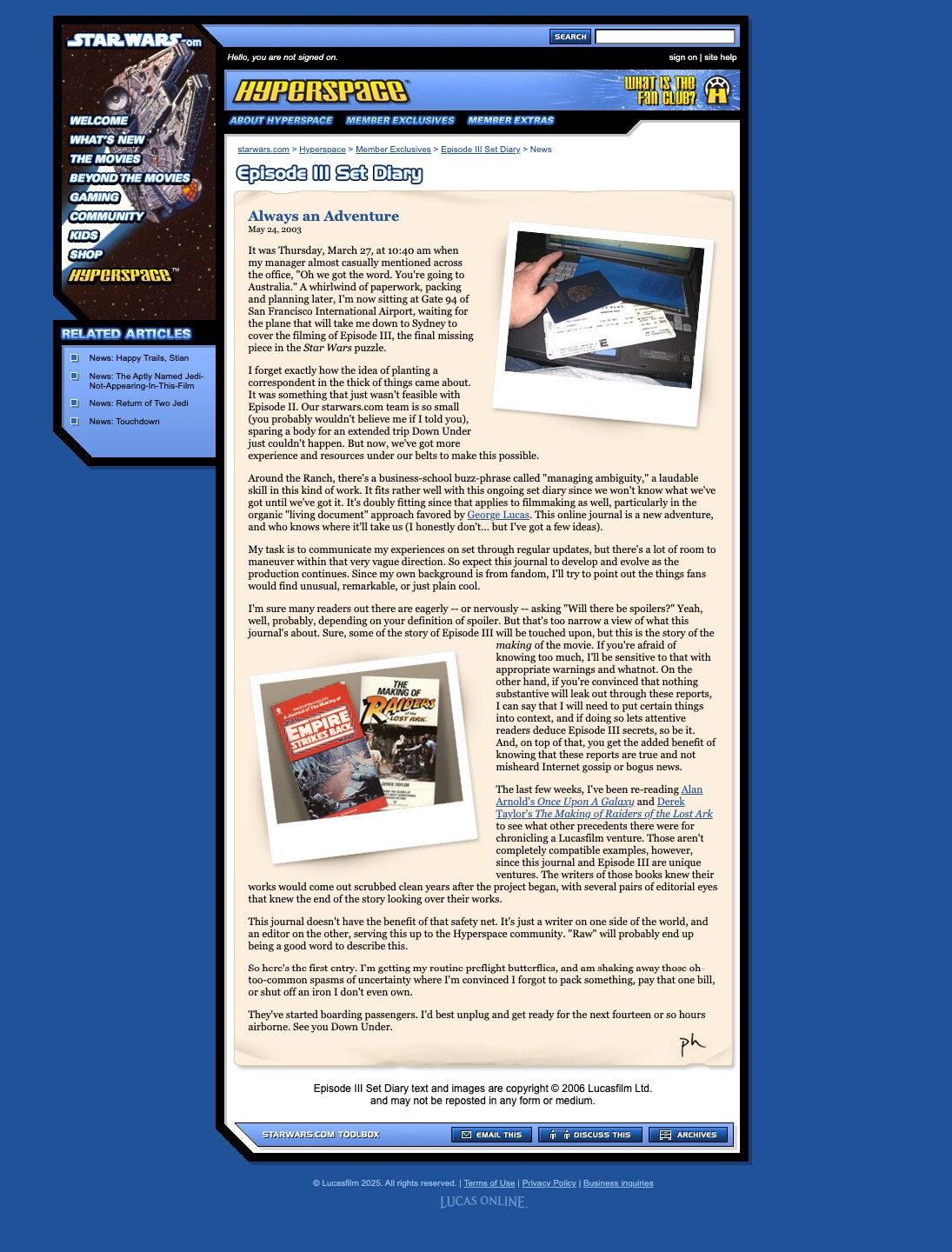In celebration of the 20th anniversary of Revenge of the Sith, StarWars.com looks back at a golden age of online Star Wars film promotion, when Lucasfilm’s Pablo Hidalgo reported in from the set of the final prequel film.

It was every fan's dream to spend the summer on the set of Episode III. Beginning in May of 2003 — a full two years before the release of Star Wars: Revenge of the Sith — StarWars.com Hyperspace members lived the next-best thing through the daily journal of the life of the production of a Star Wars film.
In celebration of the film’s 20th anniversary, StarWars.com takes a fond look back…
Looking Back at Episode III Online
It was an audacious idea; I can’t take credit for it, but I was tasked to execute it. It completely altered my trajectory at Lucasfilm as well as my relationship with Star Wars and made Revenge of the Sith a unique and major experience in my life. Looking back, 20 years after the release of that chapter, I am still amazed at what we pulled off.
Back at the beginning of 2003, my title was “Internet Content Developer.” If asked, I’d simply say I was a writer at StarWars.com — one of two at the time. It was a very small operation, and the internet of 2003 was a very different place compared to being online today. Text was king. Video was a chore. Information was one-way, and interactions were rare and hardly social.

The Lucas Online division was thankfully not on the hook to revolutionize the web; we just had to cover our operational costs. The proposition was a subscription service, dubbed Hyperspace. For an affordable annual subscription of $20, you could get exclusive content worthy of the attention of the most ardent Star Wars fan. (As an aside, it was almost called StarWars.com-Plus, ironically anticipating the streaming future that would follow decades later).
With Episode III — widely believed to be the last Star Wars movie ever — gearing up to start production in the middle of 2003, the film’s creation would be the heart of the subscription offer: an inside look, unparalleled in the industry, at the making of the movie. Such a promise would require a dedicated, embedded reporter on the set, filing stories every day. They would need to be trusted to offer an inside look while not giving away closely guarded secrets. Could such an idea work?
Ultimately, I’d be the guy sent down to Australia — the shooting location of the production — to make this happen. It would require earning the trust of George Lucas and Rick McCallum. The head of marketing at the time, who oversaw the movie website as well, Jim Ward, vouched for my journalistic chops, as did Steve Sansweet, who helped manage content across media that included the internet and fan magazines. So, too, did my manager, Paul Ens.
I had started at Lucasfilm in 2000, so I was only three years into my tenure. Remarkably, George and Rick agreed. So, I gave up my apartment and put all my stuff in storage, and moved down to Sydney, Australia for four months to live the impossible fan dream of watching a Star Wars movie get made.















































